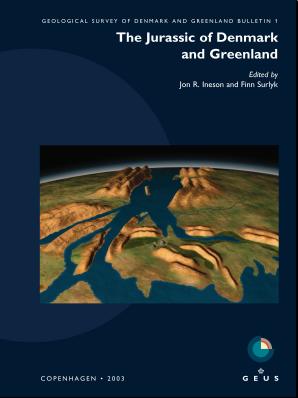
How to Cite
Share
Abstract
The Jurassic succession of Denmark is largely confined to the subsurface with the exception of exposures on the island of Bornholm in the Baltic Sea. In East Greenland, in contrast, the Jurassic is extensively exposed. Comparison of basin evolution in the two regions, which now occur on two separate plates, thus relies on highly different datasets. It is possible nevertheless to construct an integrated picture allowing testing of hypotheses concerning basin evolution, regional uplift, onset and climax of rifting, relative versus eustatic sea-level changes and sequence stratigraphic subdivision and correlation. On a smaller scale, it is possible to compare the signatures of sequence stratigraphic surfaces as seen on well logs, in cores and at outcrop and of sequences recognised and defined on the basis of very different data types. Breakdown of the successions into tectonostratigraphic megasequences highlights the high degree of similarity in overall basin evolution and tectonic style. An important difference, however, lies in the timing. Major events such as late Early – Middle Jurassic uplift, followed by onset of rifting, basin reorganisation and rift climax were delayed in East Greenland relative to the Danish region. This has important implications both for regional reconstructions of the rift system and for the understanding and testing of classical sequence stratigraphic concepts involving eustatic versus tectonic controls of basin evolution and stratigraphy.
How to Cite
Share
Downloads
Editors: Jon R. Ineson and Finn Surlyk
The Jurassic rocks of Denmark and East Greenland record the evolution of two discrete portions of the Mesozoic rift complex, now separated by the North Atlantic Ocean. The Jurassic of Denmark and adjacent areas occurs mostly in the subsurface and research has thus focussed [...]










